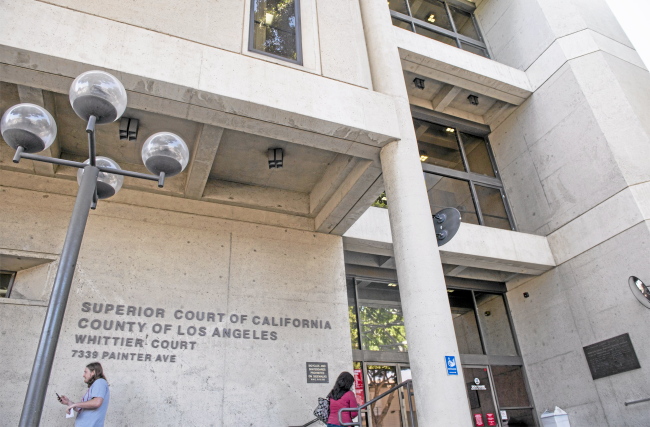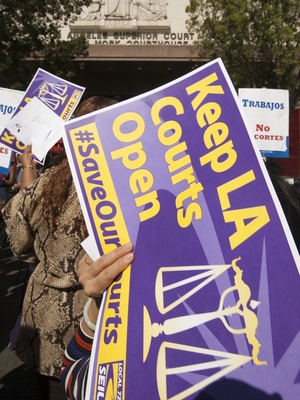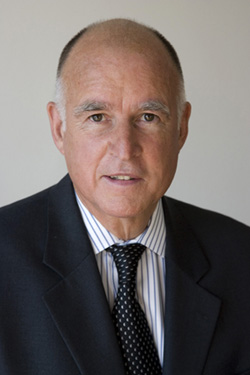Whittier Courthouse Closing June 3, A Month Early
Advocates Building Case For Courts Funding Before June Deadlines
The state’s courts advocates have become increasingly vocal ahead of California’s June 15 budget deadline, and a recent commentary in The Record newspaper in Stockton laid out the most passionate argument: That justice is being denied those in poverty who most need access to the courts. In a commentary, two members of the SEIU local 1021 noted that “… justice is more than blind when those seeking it are invisible.”
They list a few of the worst service cuts for Stockton-area citizens: “Small claims cases are no longer heard anywhere in San Joaquin County. You can no longer access court records online for family law, juvenile, guardianship, mental or criminal proceedings.” They are also among organized labor voices statewide starting to increase pressure on the budget process. Read the commentary here.
Golden State Sets Negative Example For Small Claims
Jury Still Out On Court Funding Increases
Newest ‘Good News’ Budget? Not For Justice System
Law School Offers ‘Practice’ Courtroom For Holding Court
State Budget Ideas List Courts Among Lawmaker Concerns
Exactly on cue, opposition views are starting to emerge in advance of Gov. Brown’s next draft of a state budget, which is expected next week. The Los Angeles Times is reporting that state Assembly Speaker John A. Pérez, a Democrat and former union political director from L.A., lists increased courts funding among his concerns. The news brought quick comment from Chief Justice Tani G. Cantil-Sakauye, who has called upon lawmakers to invest in the justice system.
“I applaud the speaker’s leadership in articulating the need to begin reinvesting in the courts,” she said in a statement to the Times. “His knowledge and understanding of the equal access to justice issues are a great benefit to all Californians.”
The speaker’s comments are hardly casual. The “ideas” were developed along with his fellow members of the Assembly Democratic Caucus and came during a speech to the Sacramento Press Club. That means it’s another step toward the state budget debate that begins for real when Brown releases the next version of his spending plan.
Read about other issues in the complete LA Times story here.
Strange Days Loom As Budget Deadlines Near, Courts Still Face Crisis
The public part of the state budget debates is held during the “June gloom” season because the state constitution “requires” the legislature to pass the budget by June 15, a deadline that has been seldom met (we went 23 of 24 years missing it, but passed it on time last year), and never with any real consequence. As a budget expert with Gov. Schwarzenegger famously put it: “If you do something bad and you never get punished for it, then you don’t see it as being bad anymore.”
[Read more…]
Shifting Costs, Releasing Prisoners Helps Balance a Budget
Profile of Court Fees Increases Amid Budget Crisis
Allowed uses also shift. That court fee, for example, was initially earmarked for security but can now be used for administration. It will be an important issue in the upcoming crunch-time debates over what funding the legislature actually finds to address the growing courts crisis.


